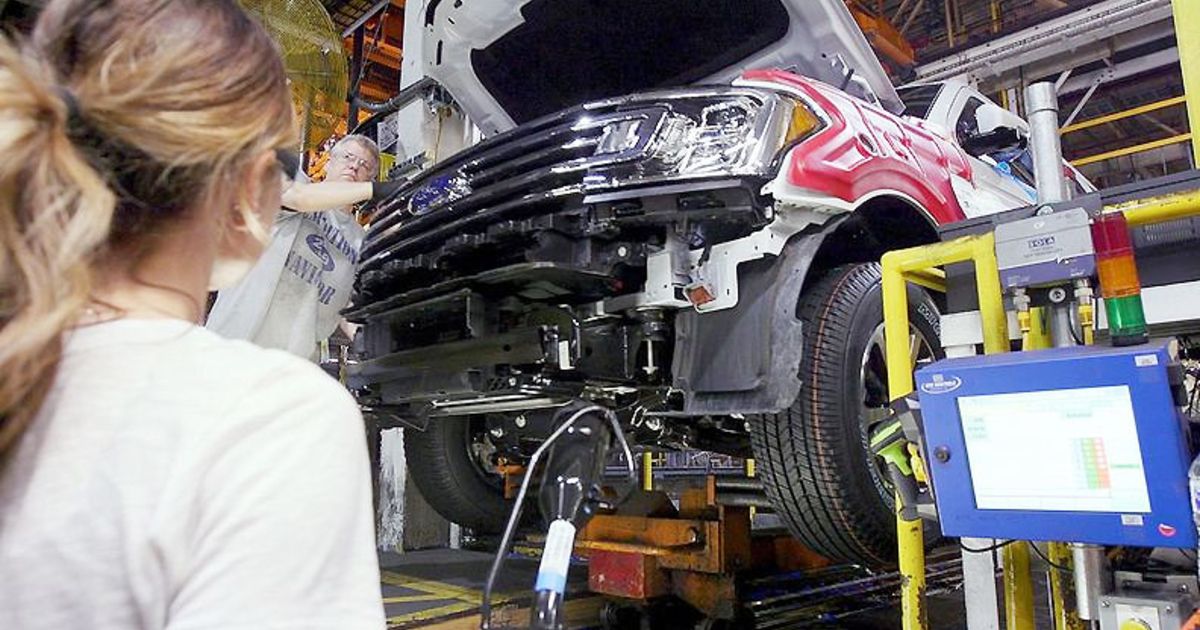
DETROIT — General Motors and Ford Motor Co. say they expect to clear backlogs of unfinished vehicles before the end of the year, a positive sign for their balance sheets going into 2023 after battling prolonged supply snags.
GM said it shipped out three-quarters of its 95,000 vehicles awaiting microchips and other scarce parts in the third quarter. Ford was further behind on that front, with the number of vehicles in limbo more than doubling during the quarter to 40,000.
The financial results both companies reported last week show the importance of being able to get those vehicles to dealerships and into customers’ hands. GM’s net income rose 37 percent from a year earlier to $3.3 billion, and its revenue surged to a third- quarter record, partly as a result of those shipments.
Meanwhile, Ford’s earnings were were hampered by its increased backlog, as well as a planned wind down of its self-driving partner, Argo AI. A $2.7 billion noncash charge related to Ford’s investment in Argo swung the automaker to an $827 million net loss.
“Chips are getting better, certainly, than they were a year ago,” GM CFO Paul Jacobson said. He said GM is still building some vehicles without certain parts but not at the volume seen earlier.
Ford said it expects a roughly 15 percent year-over-year increase in wholesale shipments during the fourth quarter and projected that full-year volume would be up 10 percent from 2021. It forecast adjusted earnings of $11.5 billion, which is at the low end of its earlier outlook because of continued supply-chain issues, even though CFO John Lawler said the chip crisis is lessening.
“It’s not easing tremendously; it’s easing slightly,” Lawler said. “But then we’re seeing issues in nonchip suppliers. It has to do with the tight labor market, but … we’re finding with many of the suppliers during the COVID time frame had not invested in maintenance or in their facilities and tooling, and so they’re not able to ramp as we expected.”
The biggest negative in Ford’s third- quarter results was the decision by Ford and fellow investor Volkswagen Group to shut down Argo. Ford now plans to scale back its self-driving vehicle ambitions — an area where GM and partner Cruise are continuing to grow.
Ford had invested billions into Argo and initially planned to deploy Level 4 self-driving vehicles for commercial use in 2021. But CEO Jim Farley last week said the automaker now believes profitable mass deployment of fully self-driving vehicles is “a long way off.” Lawler said it’s likely “five-plus years away.”
Ford said it has halted spending on Level 4 advanced driver-assist systems to focus on lower-level technology that can be deployed sooner.
When Ford eventually does develop Level 4 technology, Lawler said it’s expected to focus on commercial services such as package delivery, which it had been testing in various cities with Argo.
Farley said Ford plans to hire “a couple hundred” Argo employees to expand and accelerate development of technology categorized as Level 2 Plus and Level 3 because they rely on more driver interaction.
Doug Field, Ford’s chief advanced product development and technology officer, said creating fully autonomous vehicles is the most difficult challenge facing the industry.
“It’s harder than putting a man on the moon,” he said.
Amid GM’s strong third-quarter report, CEO Mary Barra said the automaker expects to build fewer electric vehicles by the end of next year than it previously forecast, citing a slow start to production at a new battery plant in Ohio.
The company now expects to produce 400,000 EVs in North America by mid-2024, rather than by the end of 2023 as it outlined in February.
“We had a very aggressive plant launch plan when we started to build the plant,” she told analysts, citing employee training as one element that has taken longer than anticipated.
Ford, meanwhile, said it remains confident it can meet a goal of producing 600,000 EVs by the end of 2023 and 2 million by 2026.
“There is no change to our target,” Farley said.